- Home
- Ian Buruma
Year Zero Page 3
Year Zero Read online
Page 3
In Paris, on the Place de la République, a reporter for the Libération newspaper watched “a moving mass of people, bristling with allied flags. An American soldier was wobbling on his long legs, in a strange state of disequilibrium, trying to take photographs, two bottles of cognac, one empty, one still full, sticking from his khaki pockets.” A U.S. bomber pilot thrilled the crowd by flying his Mitchell B-25 through the gap under the Eiffel Tower. On the Boulevard des Italiens “an enormous American sailor and a splendid negro” decided to engage in a competition. They pressed every woman to their “huge chests” and counted the number of lipstick marks left on their cheeks. Bets were laid on the two rivals. At the Arc de Triomphe, a bigger crowd than had ever been seen offered thanks to General de Gaulle, who flashed a rare smile. People belted out the “Marseillaise,” and the Great War favorite, “Madelon”:
There is a tavern way down in Brittany
Where weary soldiers take their liberty
The keeper’s daughter whose name is Madelon
Pours out the wine while they laugh and “carry on” . . .
O Madelon, you are the only one
O Madelon, for you we’ll carry on
It’s so long since we have seen a miss
Won’t you give us just a kiss . . .
And yet V-E Day in Paris was regarded by some as a bit of an anticlimax. France, after all, had already been liberated in 1944. Simone de Beauvoir wrote that her memory of that night was “much more confused than my memories of our other, earlier festivities, perhaps because my feelings were so confused. The victory had been won a long way off; we had not awaited it, as we had the Liberation, in a fever of anxiety; it had been foreseen for a long time, and offered no new hopes. In a way, this end was like a sort of death . . .”6
Muscovites, on the other hand, swept into the streets as soon as V-E Day was announced in the early morning of the ninth. Masses of people, many of them still in their nightgowns and pajamas, danced and cheered through the night, crying “Victory! Victory!” In a letter to the British historian Martin Gilbert, one of Stalin’s interpreters, named Valentin Berezhkov, recalled: “The pride that victory was finally won over a treacherous and foul enemy, the grief for the fallen (and we did not know then that nearly thirty million were killed on the battlefields), hopes for a lasting peace and continued cooperation with our wartime allies—all this created a special feeling of relief and hope.”7
Libération of May 8 was probably right: this was above all a party for the young. “It was only the young who felt exuberant. Only the young jumped onto the jeeps, which resembled a grandstand at the Longchamp races, running through the Champs-Élysées, flags around their heads and songs on their lips. And that is the way it should be. For the young the danger is over.”
My grandmother in England, pining for her husband still serving in the British Army in India, could not share her children’s exuberance. Her feelings were no doubt shared by many people who worried about faraway husbands or sons, or had lost far too much to rejoice. The reaction of this daughter of immigrants was also peculiarly English. “I missed you too much to celebrate,” she wrote to my grandfather, “so I improved the shining hour by doing a bit of extra work in the garden.”
My father cannot even remember the day the war officially ended. He vaguely recalls the sound of Russian guns fired in celebration. Marshall Zhukov mentions this in his memoir: “We left the banquet hall [on May 9] to the accompaniment of a cannonade from all types of weapons . . . the shooting went on in all parts of Berlin and its suburbs.”8 But my father was used to the sound of guns, and made no special note of it.
Brian Urquhart, the young British intelligence officer, stuck in northern Germany, fresh from the shock of witnessing Belsen, could not feel total joy either: “It is difficult to reconstruct what I actually felt at the time on such an overwhelming occasion. Nearly six years from despair to victory, many friends gone, fantastic waste and destruction . . . I wondered about all those nameless faces in war photographs, refugees, prisoners, civilians under bombing, Russians in the snow and wreckage of their country, crewmen on sinking freighters—how many of them would their families see again?”9
But such thoughts did not dampen the spirits of revelers in New York, Paris, and London. It was a festival of youth, but also of light. Quite literally. “The City Lights Up!” was the May 9 headline of the New York Herald Tribune. “The Night Sky of London was Aglow Again” said the London Daily Herald on May 8. In Paris the lights of the Opéra were lit for the first time since September 1939, in red, white, and blue. One after the other, the lights went back on illuminating the Arc de Triomphe, the Madeleine, and the Place de la Concorde. And the Herald Tribune proudly reported “large floodlighted Stars and Stripes, Union Jack and Tricolor” waving in front of their building on the Rue de Berri.
New York City had been going steadily darker since the “dimout” on April 1942, and then the “brownout” since October 1943. Only the torch on the Statue of Liberty remained dimly lit. But by 8 P.M., May 8, according to the New York Daily News, “all the jewels in Broadway’s crown were full aglow, and the great chunky masses of humanity seemed to swim in the light and their spirits were warmed by it.”
Nelson’s Column on London’s Trafalgar Square was picked out by a searchlight. St. Paul’s, standing almost alone in the midst of the bombed City financial district, was bathed in floodlights. Cinemas lit up Leicester Square in lurid colors. And then there was the soft red glow of tens of thousands of bonfires lit all over London and beyond, all the way up to Scotland.
It wasn’t just the relief that lights could be switched on again now that bombs and “doodlebugs” (German flying bombs) were no longer to be feared. There was something symbolically moving about the return of light. Reading these accounts I was reminded of a story I was told once by a Russian academic in Moscow. French literature was her subject and her passion. She had dreamed all her life of seeing France and other parts of western Europe, places she knew only from books. At last, in 1990, after the fall of the Berlin Wall, her dream came true; she was allowed to travel to Paris by train. I asked her what had impressed her most. She said it was the moment her train passed from East to West Berlin in the night, and suddenly there were lights.
• • •
FESTIVALS OF LIGHT, universal and as old as the first torch lit by man, often have a mystical origin, relating to the seasons and the beginning of new life. Some recollections of the early days of liberation have a distinct air of religious exultation. This is especially true of the rapturous reception of Allied soldiers by the female population. Maria Haayen, a young woman from The Hague, remembers seeing the first Canadian tank rumbling towards her, with the head of a soldier peering from the gun turret: “All the blood drained from my body, and I thought: there comes our liberation. And as the tank came nearer, I lost my breath and the soldier stood up—he was like a saint.”10
This feeling was perhaps more common among young women, but it was shared by men. One Dutchman recalled that it “was a privilege even to touch the sleeve of a Canadian uniform. Each Canadian private was a Christ, a saviour . . .”11
In one important sense, the experience of the Allied soldiers in liberated countries in the summer of 1945 might be compared to what happened about twenty years later, when the Beatles arrived. Then, too, liberation was expressed as a form of mania, which was above all erotic. In 1945, men in countries such as Holland, Belgium, and France, and even more so in defeated Germany and Japan, were either absent, or in captivity, or poor, underfed, and demoralized. Foreign occupation and defeat had more or less destroyed male authority, at least temporarily. A Dutch historian at the time put it like this: “Dutch men were beaten militarily in 1940; sexually in 1945.”12 The same could be said for France, or Belgium, or any number of countries which had known occupation. One of the consequences of war was that many women had lost much of their female subservience
. They had taken jobs, worked for the resistance, or been left to take care of their families. They were, in the deeply disapproving French phrase of the time, hominisée; they had begun to behave like men.
Compared to the skinny Dutchmen, or Frenchmen, or Germans, unwashed, shabbily dressed, the spruce Canadians and tall Americans, well-fed, well-paid, sharp-looking in the sexy uniforms of conquerors, must indeed have looked like gods. In the words of one of many Dutch women who ended up marrying a Canadian: “Let’s face it, after what we had been through the Canadians looked delicious.”
Nothing expressed the eroticism of liberation better than the music accompanying the Allied troops, music that had been banned by the Nazis: swing music, jazz, Glenn Miller’s “In the Mood,” Tommy Dorsey, Stan Kenton, Benny Goodman, Lionel Hampton, “Hey! Ba-Ba-Re-Bop.” In Paris, young people danced to “Victory discs,” jazz records distributed to American troops. And the Franco-American spirit entered French chansons too. The hit song of 1945, sung by Jacques Pills, went:
Oh! Là là!
Bonjour mademoiselle
Oh! Là là!
Hello, qu’elle fait comme ça
Oh! Là là!
Je pense you are très belle
Oh! Là là!
You very beau soldat . . .
Fraternizing with the Germans was still officially forbidden to the Western Allies in 1945. In Holland and France it was actively encouraged. There was even something named Operation Fraternization. In July, the Entertainment Committee of the Netherlands was founded under the auspices of Princess Juliana and Prince Bernhard, specifically to offer English-speaking female company to the more than one hundred thousand Canadians. The idea was that these young women would accompany the soldiers to art shows, museums, movies, and properly supervised dances.
The hopeful and piously expressed expectation was that the women would “uphold the honor of our nation.” My Dutch grandmother, as the wife of a Protestant minister, was asked to oversee the dances, to make sure nothing took place between the Canadians and their Dutch girlfriends that might sully the national honor. Her colleague in this endeavor was a Catholic priest called Father Ogtrop, whose name was shouted out by the dancers to the tune of “Hey! Ba-Ba-Re-Bop.” I’m not sure what transpired at those dances. But in the words of one Canadian soldier, he had never “met a more willing female population than we did in Holland.”13
This was just as well, from the point of view of the Allied troops, since their commanders took a dim view of prostitution. Red light areas were “off-limits,” even in France, where maisons de tolérance had thrived under German occupation. Some of the older American veterans still had fond memories of Paris in 1918, after World War I, where the brothels of Pigalle (“Pig Alley”) had given the doughboys a warm welcome. Even after World War II, the ban on prostitution was not always observed. In at least one recorded instance, in the city of Cherbourg, several brothels were indirectly run by the U.S. Army itself.14 Some were reserved for black GIs, others for whites only, and American MPs made sure the queues at the brothel doors were orderly. But for the most part, this time, much to the chagrin of those who worried, with excellent reason, about the proliferation of venereal diseases in the absence of organized sexual trade, fraternization was on a strictly freelance basis.
Not that relations between troops and local women were equal. The men had the money, the luxury goods, the cigarettes, the silk stockings and, more important, the food that people desperately needed to survive. And the many expressions of worship for the liberators suggest a potentially humiliating lack of balance. Yet to see the women who were so eager to fraternize as naïve hero worshippers, or powerless victims, would not be entirely accurate. Simone de Beauvoir mentions a young Parisian woman in her memoir whose “main distraction” is “American hunting” (la chasse à l’Américain).
Benoîte Groult, who later became a popular novelist, wrote an account, with her sister Flora, of their American-hunting exploits. They called their Journal à Quatre Mains a novel, but it is a barely fictionalized diary. Groult spoke English and was one of the French women who volunteered to fraternize through the American Red Cross. But her real stamping grounds were less salubrious. She spent most of her evenings at clubs in Paris that catered to Allied soldiers and welcomed French girls but barred French men, clubs with innocuous names like Canadian Club, Independence, Rainbow Corner.
Groult’s detailed physical descriptions of American and Canadian soldiers are as adoring as those by people who thought they were gazing at saints. Except that they are amazingly down-to-earth, and the men are far from saintly. She writes about her conquests in the way some men brag about picking up babes. The clubs she frequents are described as “slave markets.” But the slaves, in this instance, are the conquering heroes.
Here is Benoîte Groult on Kurt, an American fighter pilot: “The nose a little short, or rather, a trifle turned up, giving him a childish air common to all Americans; his skin bronzed by the stratosphere; strong hands, the shoulders of an orang-utang . . . perfect hips, straight, correcting the slightly heavy power of the rest of his body . . .” Kurt never reads books, and is interested only in food and airplanes. But what does she care? Indeed, she writes, “I want the arms of an idiot, the kisses of an idiot. He has an adorable smile, the corners of his mouth curling up above those perfect American teeth.”15
In short, Groult would have been seen by Frenchmen as terribly homminisé. She had been married, but lost her husband during the war. Liberation in the summer of 1944 gave her the license, and the desire, to find pleasure in the arms of men she would never see again. This was a precious freedom. In fact, it was Kurt who wanted a more serious relationship, showed her photographs of his parents, and hoped to take her back to the States as his war bride. For Groult, a young Parisian intellectual with literary aspirations, this was naturally out of the question.
Benoîte Groult was perhaps unusually hard-boiled, or pretended to be. But her account illustrates a point made by a French historian of the German occupation. According to Patrick Buisson, the presence of large numbers of young German men in France during the war offered many women a chance to rebel: women stuck in bad marriages, or in oppressive bourgeois families, maids bullied by their employers, spinsters left on the shelf, or simply women of all classes who wished to break away, even temporarily, from the constraints of a conservative patriarchal society. The fact that liaisons with an occupation army also brought material benefits, allowing many such women to live better than others, including in some cases their former masters, sweetened the sense of revenge.16
And not just women. Minorities of all kinds often forge alliances with powerful outsiders to get the majorities off their backs. This was a facet of all colonial societies. But the disproportionate number of French homosexuals who either collaborated with the Germans or used wartime Paris as a sexual playground may also have had something to do with a common grievance against the respectable bourgeoisie. The fact that Nazi and Vichy propaganda was itself homophobic was not an impediment. Occupation was not necessarily endorsed; it was an opportunity.
“Fratting” with the Allied liberators was, in any case, more alluring than collaboration with the Germans, for it was not tainted with treachery. It is hard to know how much homosexual fraternizing went on, since this is obviously something people were rather discreet about. One case is beautifully described by Rudi van Dantzig, the dancer, writer, and choreographer of the Dutch National Ballet. He wrote a novel, For a Lost Soldier, based on his own experience after being evacuated from Amsterdam to a northern village during the “hunger winter” of 1944/45. When the Canadians reached his village, he was only twelve years old, but had yearnings he himself barely understood. A jeep stops on a country road. A hand is extended. He is hoisted on board. This is when Jeroen, the boy, meets Walt, the Canadian soldier, who would end up seducing him. But the book is not at all an indictment of pedophilia. On the cont
rary, it is written as an elegy: “The arm around me is warm and comfortable, as though I’m wrapped in a chair. I let it all happen almost with a sense of joy. And I think: ‘This is liberation. This is the way it should be, different from other days. This is a party.’”17
Benoîte Groult is perfectly well aware of the material benefits of having sex with an American. She makes the link between sexual hunger and hunger for food quite explicit. Lying in bed under Kurt’s body, she remarks, is like sleeping with a whole continent: “And you can’t refuse a continent.” Afterwards, they ate: “My appetite was sharpened by four years of occupation and twenty-three years of chastity, well almost. I devoured the eggs hatched two days ago in Washington. Spam canned in Chicago. Corn ripened four thousand miles from here . . . It is quite something, the war!”
Spam, eggs, Hershey bars could be eaten right away. Stockings could be worn. But Lucky Strikes, Camels, Chesterfields, or Caporal cigarettes could be exchanged on the black market for more food. The GIs were supplied with plenty. This, as much as their broad shoulders, sweet smiles, straight hips, and fine uniforms, was an inestimable attraction. The easy access to cigarettes alone made them into rich men in very poor countries. It was easy to conclude, then, that the women who slept with them were really no better than whores.
This was indeed what many people thought, especially women who barely scraped by, or men who were barred from the dance halls, cinemas, and recreation centers reserved for the liberators and their local girlfriends. The suspicion was heightened by the fact that some of the young women who latched on to Allied servicemen still wore headscarves to hide the evidence of recently shaved heads, the mark of punishment for those who had shortly before taken German lovers.

 A Japanese Mirror
A Japanese Mirror Taming the Gods
Taming the Gods The China Lover
The China Lover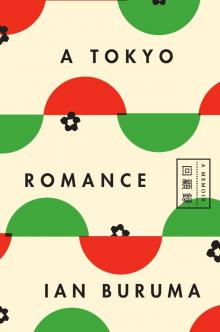 A Tokyo Romance
A Tokyo Romance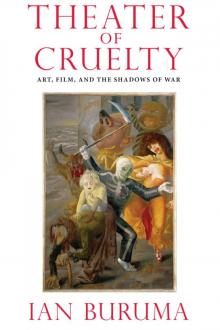 Theater of Cruelty
Theater of Cruelty Year Zero
Year Zero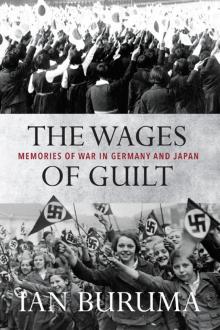 The Wages of Guilt
The Wages of Guilt Murder in Amsterdam
Murder in Amsterdam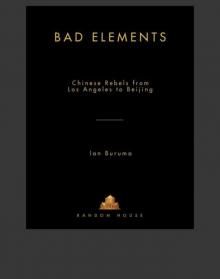 Bad Elements
Bad Elements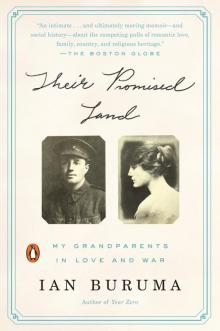 Their Promised Land
Their Promised Land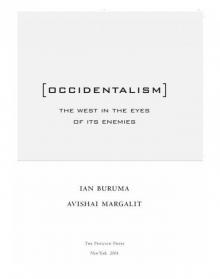 Occidentalism
Occidentalism Anglomania
Anglomania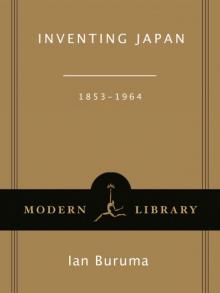 Inventing Japan: 1853-1964 (Modern Library Chronicles)
Inventing Japan: 1853-1964 (Modern Library Chronicles) The Missionary and the Libertine
The Missionary and the Libertine